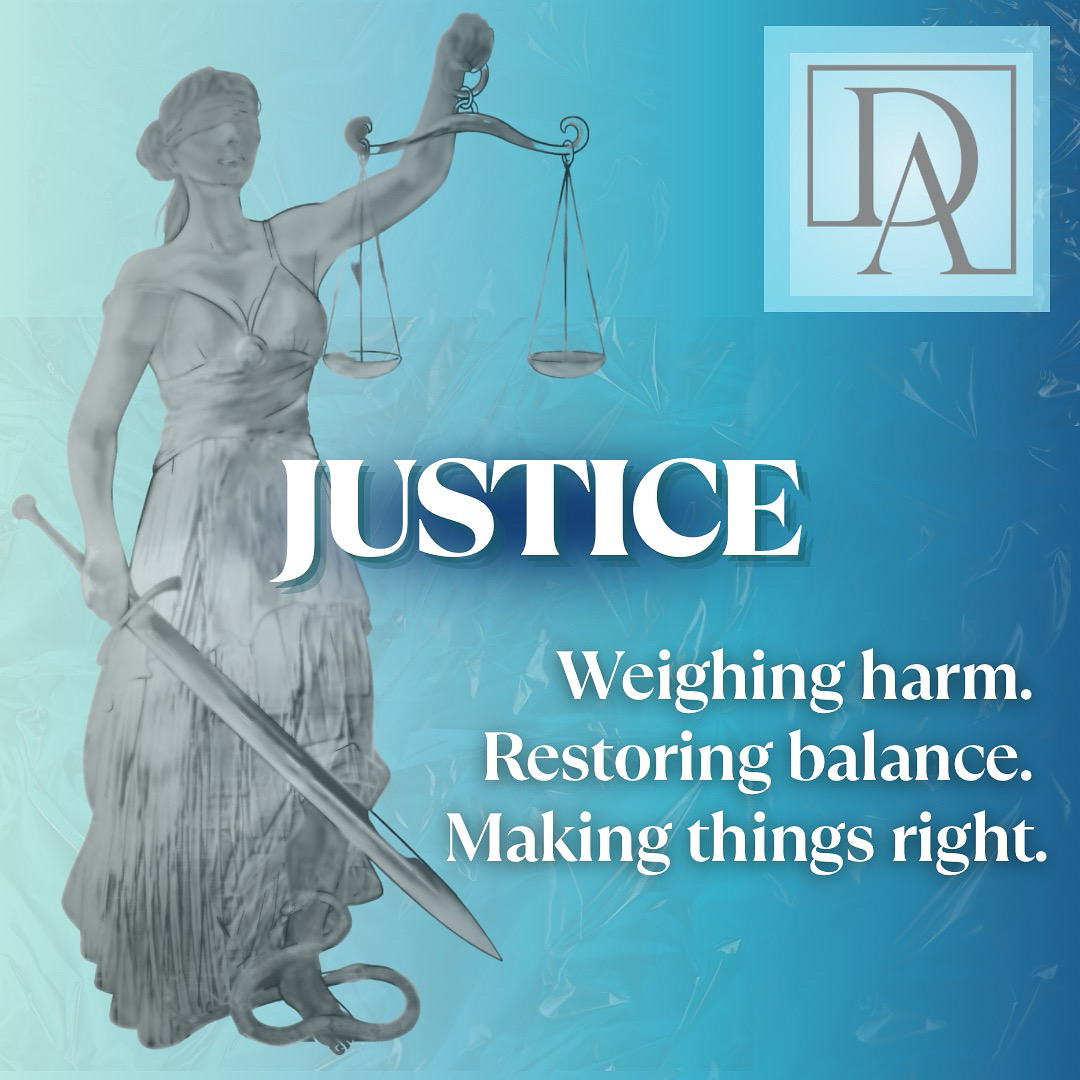Beyond the Blindfold: What the Scales of Justice Really Mean
Lady Justice is everywhere. She stands on courthouses across the globe, blindfolded and bearing her signature sword and scales. But while the blindfold often takes center stage - symbolizing impartiality and objectivity - it’s the scales in her hands that carry the deeper, enduring message about the pursuit of justice.
A Symbol Rooted in Ancient Traditions
The image of Lady Justice dates back thousands of years. In ancient Egypt, she was known as Maat, the goddess of harmony and order, who weighed a person’s heart against a feather to judge their soul. In Greece, she became Themis, the consort and counselor to Zeus and guardian of divine law. The Romans later fused Themis with her daughter Dike to form Justitia, the figure we most recognize today. She is the only cardinal virtue to be so widely immortalized in sculpture, murals, and courtrooms.
Throughout history, she has been accompanied by various symbolic creatures, including an ostrich, a dog, and a snake, which all represent attributes believed essential to justice. Yet across centuries and civilizations, her scales remained constant: a visual commitment to balance, equity, and deliberation.
The Scales: A Measure of Fairness
While the blindfold draws our attention, the scales themselves deserve a closer look. They symbolize the heart of the legal process: weighing.
• Balance and Impartiality: The scales are a reminder that justice must carefully evaluate all sides. Every case involves competing narratives, evidence, and arguments. True justice arises not from assumptions or appearances, but from deliberation and balance.
• Fairness and Equitability: The scales call us to reach verdicts that serve everyone involved - not favoring one side, but striving for an outcome rooted in fairness and the rule of law.
• Weighing Evidence: In our modern judicial system, Lady Justice’s scales represent the process itself: listening, considering, and measuring the strength of each claim. Justice is not arbitrary—it is methodical and disciplined.
Justice should serve all people equally, not just the privileged few. This principle echoes the values championed by Eleanor Roosevelt throughout her lifelong advocacy for human rights. As she once said, “Justice cannot be for one side alone, but must be for both.”
What Are We Weighing Today?
The question isn’t just what justice looks like but what it means. As legal scholars Judith Resnik and Dennis Curtis explore in their book Representing Justice, the blindfold only became part of Lady Justice’s attire in the 17th century, and even then, it was controversial. In earlier eras, blindness symbolized deception, not objectivity.
Their research, which is featured in The New York Times by journalist Randy Kennedy, shows how Lady Justice has changed over time, shaped by art, law, and culture. But as the world’s legal systems evolve toward privatized hearings and closed-door arbitration, the ideals she represents feel increasingly out of step with modern realities.
Are we still honoring the values her scales reflect? Are we truly balancing access to justice for all, or just replicating appearances?
A powerful example from Resnik and Curtis’s travels illustrates the deeper meaning of justice. While visiting a small courthouse in Minnesota, they found not a statue or painting, but a framed, worn corduroy jacket. It was the signature courtroom attire of a longtime public defender. It served as a humble tribute to fairness, advocacy, and the everyday pursuit of justice. Sometimes, symbols don’t have to be grand to be powerful.
Justice as a Living Ideal
Justice is not static. As the philosopher Manly P. Hall observed, it is often “found at the point of equilibrium… crucified between two thieves of contradiction.” In that sense, the scales may represent more than just legal balance. They reflect a deeper, often spiritual effort to align our laws with humanity’s highest ideals.
In the courtroom, the scales remind us that no case is simple. That every decision we make has weight. That understanding lies not in absolutes, but in the tension between competing truths.
So the next time you see Lady Justice, don’t just look at the blindfold. Look at the scales. Ask what they’re weighing—and whether our modern systems are living up to the balance they promise.
Palmetto State Injury Lawyers
Fighting for balance, fairness, and justice—every case, every client.
⸻
Sources:
- Eleanor Roosevelt, The Moral Basis of Democracy (Harper & Brothers, 1940)
- Manly P. Hall, The Secret Teachings of All Ages (1928, reprint 2003), p. 130
- Judith Resnik & Dennis Curtis, Representing Justice: Invention, Controversy, and Rights in City-States and Democratic Courtrooms (Yale University Press, 2011)
- Randy Kennedy, “That Lady With the Scales Poses for Her Portraits,” The New York Times, Dec. 15, 2010
- Process & Faith, “The Scales of Justice: What Exactly Is Being Weighed?” (accessed June 26, 2025)

Categories
Bicycle Accidents Boating Accidents Bus Accidents Car Accidents Child Injuries Drunk Driving And Other Punitive Issues Food Poisoning Get To Know Us Head Injuries Insurance Motorcycle Accidents Pedestrian Accidents Personal Injury Premises Liability Prescription Drug Overdose Products Liability Property Damage Slip and Fall Accidents Traumatic Brain Injury Trucking Accidents Wrongful Death